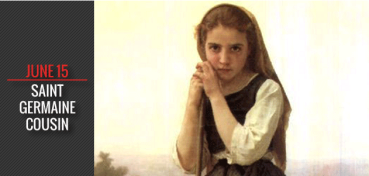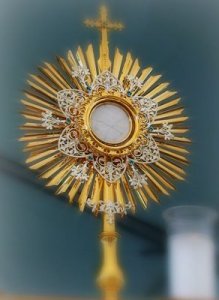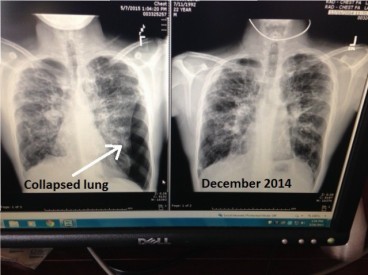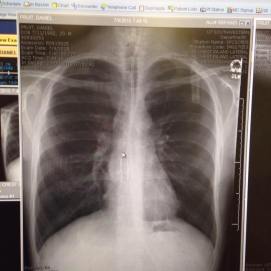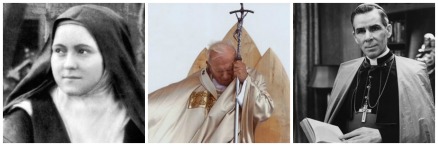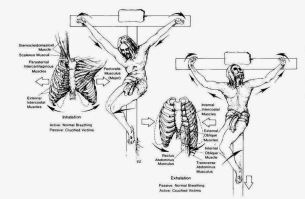
“It was now about noon, and darkness came over the whole land until three in the afternoon, for the sun stopped shining. And the curtain of the temple was torn in two. Jesus called out with a loud voice, “Father, into your hands I commit my spirit.” When he had said this, he breathed his last.” (Luke 23:44-46)
“On the evening of that first day of the week, when the disciples were together, with the doors locked for fear of the Jewish leaders, Jesus came and stood among them and said, “Peace be with you!” After he said this, he showed them his hands and side. The disciples were overjoyed when they saw the Lord.
Again Jesus said, “Peace be with you! As the Father has sent me, I am sending you.” And with that he breathed on them and said, “Receive the Holy Spirit. If you forgive anyone’s sins, their sins are forgiven; if you do not forgive them, they are not forgiven.” (John 20:19-23)
This is going to be my small, humble attempt at starting a new devotion in the Catholic Church—a devotion to the Sacred Lungs of Jesus, as silly as that sounds! We already have devotions to the Sacred Heart of Jesus and Immaculate Heart of Mary, as well as lesser known ones to the Precious Blood, the Holy Face, and the Wounds of Jesus. Why not invoke his lungs?
After all, did Mary and Joseph not experience the full power of baby Jesus’ lungs as he cried and cried, like all babies do? Did Jesus not use his powerful lungs to preach to the masses and breathe the Holy Spirit on his Apostles? Did the lance that pierced his heart not also go through his lungs?
Some say that the phrase in Luke’s Gospel, “he breathed his last” was a foreshadowing of breathing the Holy Spirit on the Apostles or that this final exhalation was an outpouring of the Holy Spirit on the whole world. In a sense, every breath that Jesus took was pure “Holy Spirit breath” because they are of one substance, but I think it is fair to say that the world received the Spirit in a more profound way at his moment of death.
Obviously, I am keenly aware of the blessing of having a great pair of lungs, so this devotion will be easy for me to put into practice. Most people take breathing for granted. As always, if we want to be humbled and take things less for granted, we should look to what Jesus did for us on the Cross. This detailed description Jesus’ Crucifixion and slow asphyxiation comes from an article called How Jesus Died for You.
Within a few minutes of being placed on the Cross, Jesus’ shoulders were dislocated. Minutes later Jesus’ elbows and wrists became dislocated. The result of these upper limb dislocations is that His arms were 9 inches longer than normal, as clearly shown on the Shroud of Turin.
In addition, the prophecy was fulfilled in Psalm 22:14, “I am poured out like water, and all My bones are out of joint.”
After Jesus’ wrists, elbows, and shoulders were dislocated, the weight of His body on his upper limbs caused traction forces on the Pectoralis Major muscles of His chest wall.
These traction forces caused His rib cage to be pulled upwards and outwards, in a most unnatural state. His chest wall was permanently in a position of maximal respiratory inspiration. In order to exhale, Jesus was physiologically required to force His body.
In order to breathe out, Jesus had to push down on the nails in His feet to raise His body, and allow His rib cage to move downwards and inwards to expire air from His lungs.
His lungs were in a resting position of constant maximum inspiration. Crucifixion is a medical catastrophe.
The problem was that Jesus could not easily push down on the nails in His feet because the muscles of His legs, bent at 45 degrees, were extremely fatigued, in severe cramp, and in an anatomically compromised position.
Unlike all Hollywood movies about the Crucifixion, the victim was extremely active. The crucified victim was physiologically forced to move up and down the cross, a distance of about 12 inches, in order to breathe.
The process of respiration caused excruciating pain, mixed with the absolute terror of asphyxiation.
As the six hours of the Crucifixion wore on, Jesus was less and less able to bear His weight on His legs, as His thigh and calf muscles became increasingly exhausted. There was increasing dislocation of His wrists, elbows and shoulders, and further elevation of His chest wall, making His breathing more and more difficult. Within minutes of crucifixion Jesus became severely dyspnoeic (short of breath).
The movements became less frequent as Jesus became increasingly exhausted, but the terror of imminent death by asphyxiation forced Him to continue in His efforts to breathe.
Because Jesus could not maintain adequate ventilation of His lungs, He was now in a state of hypo-ventilation (inadequate ventilation).
His blood oxygen level began to fall, and He developed Hypoxia (low blood oxygen). In addition, because of His restricted respiratory movements, His blood carbon dioxide (CO2) level began to rise, a condition known as Hypercapnia.
This rising CO2 level stimulated His heart to beat faster in order to increase the delivery of oxygen, and the removal of CO2.
The Respiratory Center in Jesus’ brain sent urgent messages to his lungs to breathe faster, and Jesus began to pant.
Jesus’ physiological reflexes demanded that He took deeper breaths, and He involuntarily moved up and down the Cross much faster, despite the excruciating pain. The agonizing movements spontaneously started several times a minute, to the delight of the crowd who jeered Him, the Roman soldiers, and the Sanhedrin.
However, due to the nailing of Jesus to the Cross and His increasing exhaustion, He was unable to provide more oxygen to His oxygen starved body.
The twin forces of Hypoxia (too little oxygen) and Hypercapnia (too much CO2) caused His heart to beat faster and faster, and Jesus developed Tachycardia (abnormally fast heart rate).
Jesus’ heart beat faster and faster, and His pulse rate was probably about 220 beats/ minute, the maximum normally sustainable.
Jesus’ lungs probably began to fill up with Pulmonary Oedema (excessive fluid).
This only served to exacerbate His breathing, which was already severely compromised.
Jesus was in Heart Failure and Respiratory Failure.
I remember not too fondly having experienced many of these respiratory symptoms first hand in the ER and ICU after collapsed lungs, pleurisy, and pneumonia. Let me tell you, it is extremely scary. It’s some of the worst pain that a human can experience, because every breath is agonizingly painful. It envelops your whole body and you can’t ignore it even for a second.
Think about how ridiculously hard it was for Jesus to speak from the Cross in that state, much less speak words of forgiveness and love. To his last breath he used his lungs to console and teach others. His example should make us watch what we say, especially when we are cranky or don’t feel particularly good.
A devotion to the Sacred Lungs could be used in a lot of different circumstances. If you had to make an important speech, preach to a congregation, be a lector at Mass, or have a major role in a play or musical, invoking the Sacred Lungs would be a perfect way to ensure that everything you said was guided by the Holy Spirit. Also, while playing any kind of sport, having clear, strong lungs is crucial for oxygenating your muscles and keeping a clear head. Perhaps praying to the Sacred Lungs could ensure that your breathing while you play sports remains calm and unhindered!
The devotion could also be a great source of comfort for those who have very bad lung capacity as I did (it is amazing to type DID and not DO). Anyone with severe COPD, emphysema, cystic fibrosis, pulmonary hypertension, asthma, etc. could look to his fluid-filled, barely working lungs on the Cross and see a familiar agony.

Perhaps this devotion will take off and become widespread, perhaps not, but either way, I know I will be using it!
Sacred Lungs of Jesus, may we have recourse to you!

